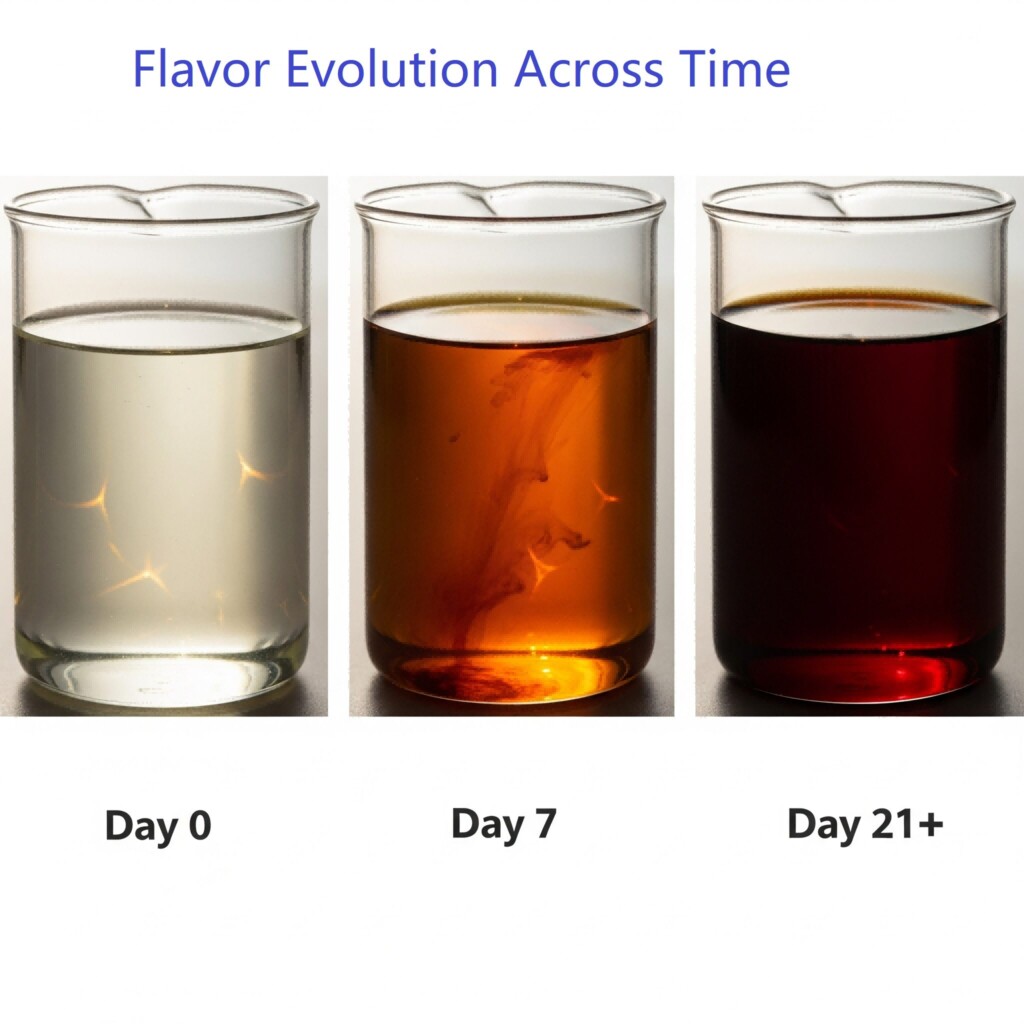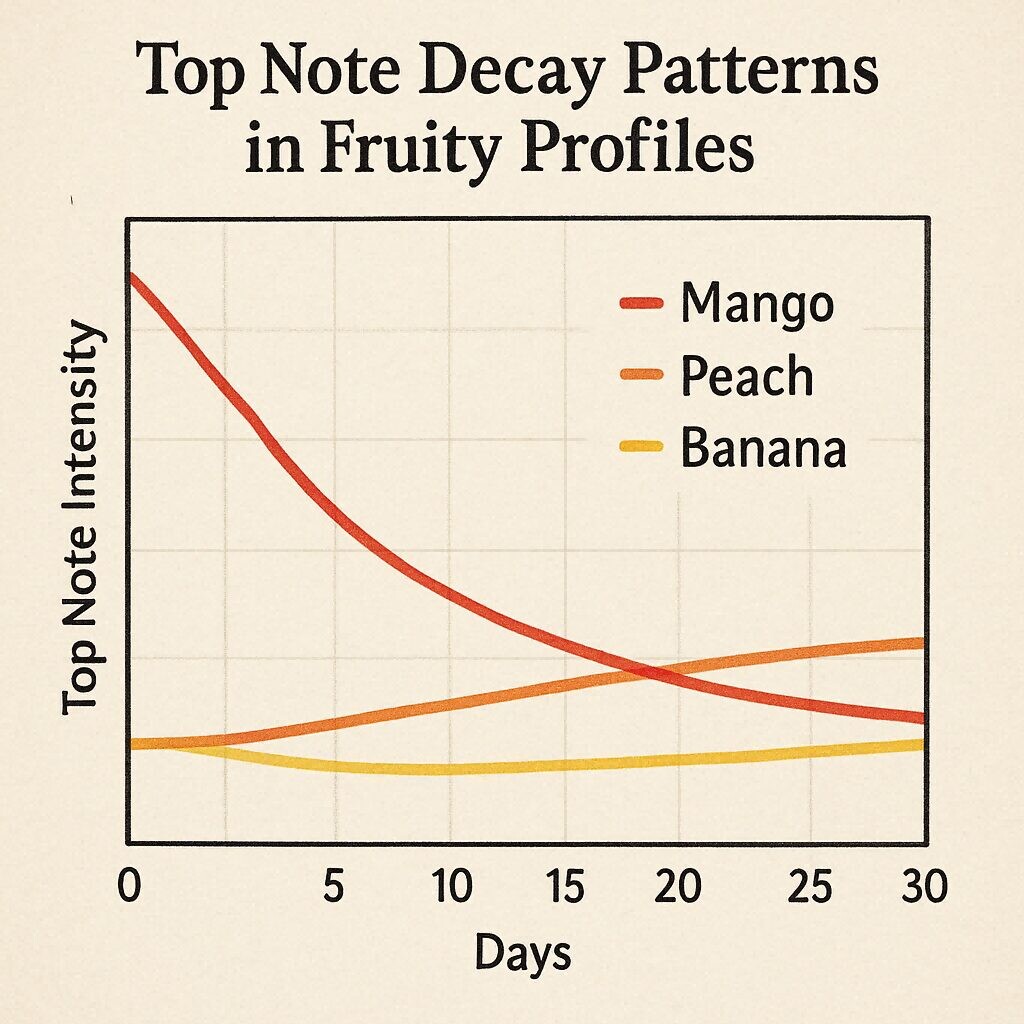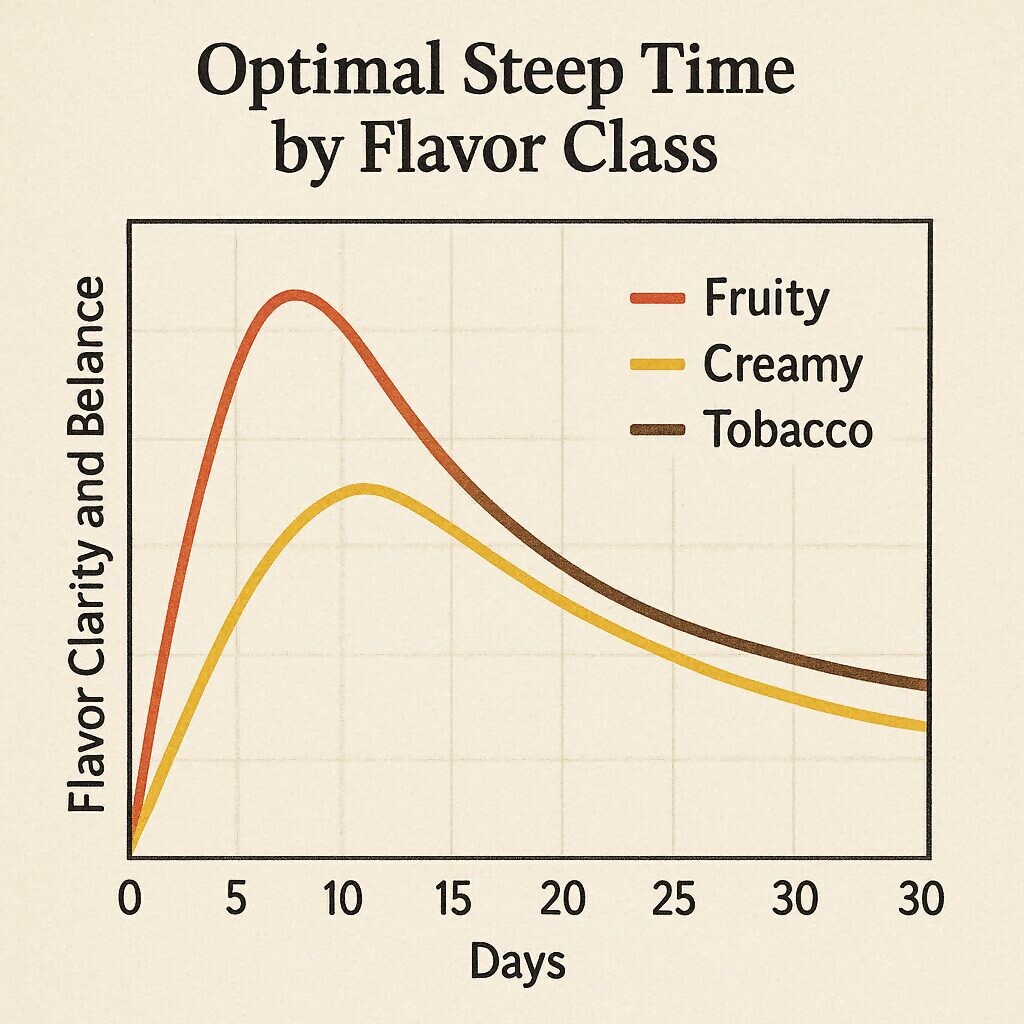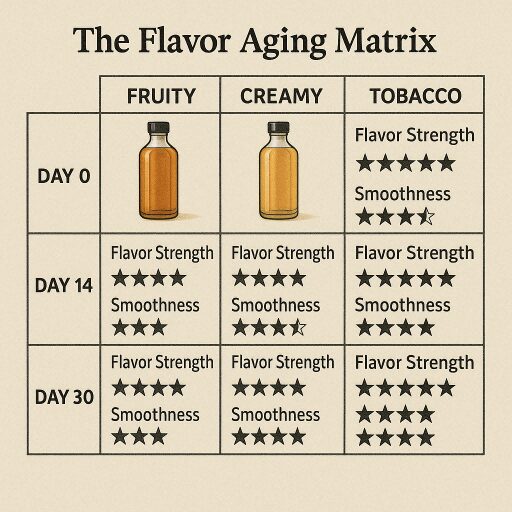Keywords: steeping flavor change, vape aging process, e-liquid flavor evolution, steep time impact, flavor degradation vs. enhancement
In the world of e-liquids, few practices are as widespread — and as misunderstood — as steeping. For some, it’s a ritual; for others, it’s a nuisance. But for flavor formulators and serious vape users, steeping represents a critical phase in the e-liquid flavor evolution.
When vape juice rests over time — either in a controlled environment or in real-world storage — complex chemical changes occur: oxidation, esterification, polymerization, and volatilization, just to name a few. These changes can enhance, mute, or even transform flavor perception.
This article explores the impact of steeping on three major e-liquid flavor classes:

Flavor Evolution Across Time
Steeping involves both chemical reactions and physical integration of components. The most common transformations include:
| Transformation | Effect on Flavor |
| Oxidation | Diminishes brightness (especially in fruits), increases richness (in tobaccos) |
| Esterification | Creates sweet or creamy notes over time |
| Volatilization | Loss of top notes (e.g., citrus, mint) |
| Maillard-type Reactions | Can darken tobacco bases and alter sweeteners |
Environmental factors such as temperature, light, and oxygen exposure accelerate or inhibit these changes.
Fruity e-liquids often contain volatile top notes — esters, aldehydes, and terpenes — that are most vulnerable to degradation.

Top Note Decay Patterns in Fruity Profiles
Creamy flavors benefit from steeping more than any other class. That’s because steeping allows time for:

Optimal Steep Time by Flavor Class
Tobacco blends — especially those using NETs (naturally extracted tobaccos) — are chemically dense and benefit significantly from aging.
| Ingredient | Behavior During Steeping |
| Acetylpyrazine | Becomes richer, less sharp |
| Benzaldehyde | May degrade, especially if cherry-like note |
| Coumarin | Enhances warmth over time |
| Oak or tobacco absolutes | Gain complexity, lose harsh edges |
| Flavor Class | Steep Time Recommendation | Notes |
| Fruity | 3–7 days | Use antioxidants to retain brightness |
| Creamy | 14–21 days | Improves dramatically over time |
| Tobacco | 30+ days | Extended steeping brings out complexity |
To ensure your e-liquid performs well from factory to end-user, consider:
At CUIGUAI Flavoring, we develop e-liquid concentrates with steep-time behavior in mind. Our R&D team rigorously tests every formula across:
✅ Whether you need a fruity burst that doesn’t fade, a creamy base that builds over time, or a tobacco blend with true evolution, CUIGUAI Flavoring delivers concentrates optimized for long-term performance.
Flavor doesn’t end with formulation — it evolves. Steeping isn’t optional for flavor-heavy e-liquids; it’s a necessary part of development, QC, and consumer experience.
A truly optimized e-liquid should taste good on day one, improve by week two, and still perform by month three. Understanding how steeping works by flavor class enables brands to engineer time into the taste — and offer better consistency and satisfaction.

The Flavor Aging Matrix.
Author: R&D Team, CUIGUAI Flavoring
Published by: Guangdong Unique Flavor Co., Ltd.
Last Updated: Jun 27, 2025
The business scope includes licensed projects: food additive production. General projects: sales of food additives; manufacturing of daily chemical products; sales of daily chemical products; technical services, technology development, technical consultation, technology exchange, technology transfer, and technology promotion; biological feed research and development; industrial enzyme preparation research and development; cosmetics wholesale; domestic trading agency; sales of sanitary products and disposable medical supplies; retail of kitchenware, sanitary ware and daily sundries; sales of daily necessities; food sales (only sales of pre-packaged food).
Copyright ©Guangdong Unique Flavor Co., Ltd.All Rights Reserved. Privacy Policy